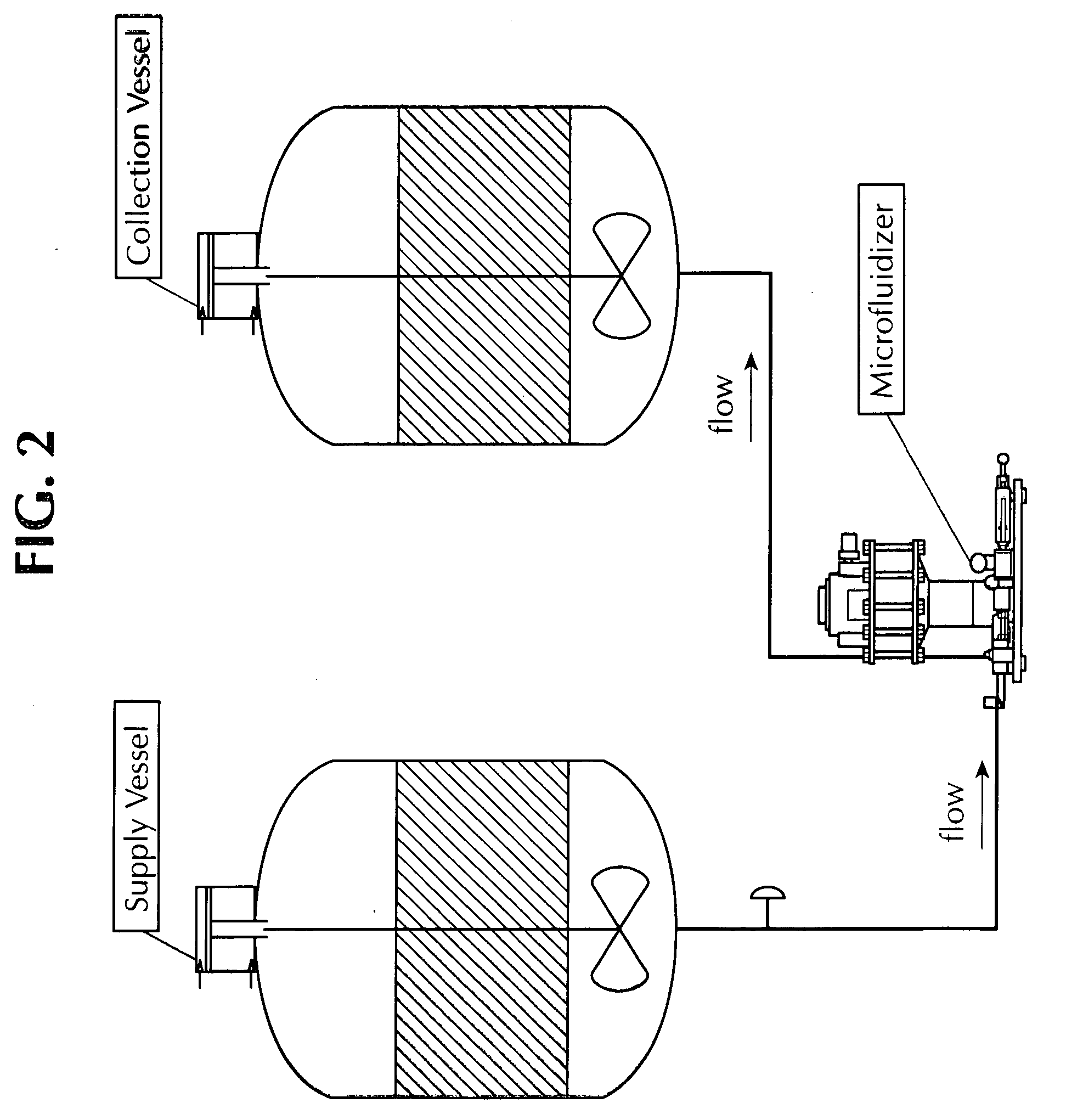Microfluidized oil-in-water emulsions and vaccine compositions
a technology of microfluidized oil and water emulsion, applied in the field of vaccines, can solve the problems of poor immunity invoked by such antigens, no effective treatment method, and high cost of synthetic and subunit vaccines, and achieve the effect of improving the safety profile of non-metabolizable oil based oil-in-water emulsions
- Summary
- Abstract
- Description
- Claims
- Application Information
AI Technical Summary
Benefits of technology
Problems solved by technology
Method used
Image
Examples
example 1
Preparation of an AMPHIGEN® Formulation
[0117]An AMPHIGEN® formulation was prepared in a two-step process. In the first step, 80 liters of Drakeol Lecithin oil solution, 116 liters of Tetanus Toxoid saline, 1.2 liters of SPAN 80, and 2.8 liters of Tween 80 were mixed together and emulsified using a Ross emulsifier. The Drakeol Lecithin oil solution contained 25% soya lecithin and 75% mineral oil. Emulsified product was recirculated through Ross emulsifier for a minimum of 5 volumes or a minimum of 10 minutes. The emulsified product was stored at 2–7° C. for a maximum of 24 hours for further processing. The emulsion from the Ross emulsifier tank was transferred to a Gaulin homogenizer and was homogenized for 20 minutes under a pressure of 4500 psi. The resulting 40% Drakeol Lecithin oil solution (hereinafter the “AMPHIGEN® formulation” or “AMPHIGEN® solution”) was then dispensed into sterile polypropylene carboxy containers. The dispensing was performed inside a class 100 dispensing h...
example 2
Primary Blending by Flashblend Homogenization of the BVD Vaccine
[0118]The apparatus used for this homogenization process is shown in FIG. 1. Using aseptic technique or steam cross valves, a bottle containing an BVD Type I antigen (an inactivated BVD Type I viral preparation) was attached to the bottom side port on the blend vessel. After the transfer of required volume of the BVD Type I antigen was completed, the BVD Type I bottle was replaced with the bottle containing an inactivated BVD Type II viral preparation (an inactivated BVD type II viral preparation). After the required amount of a BVD Type II antigen transfer was completed, the Ross homogenizer was attached to the portable vessel and the recirculation was initiated at maximum RPM (3300 rpm). Vessel agitation was maintained at medium speed.
[0119]Using aseptic technique or stream cross valve, a bottle containing Quil-A at 50 mg / ml concentration was attached to the homogenizer in-line port on the blend vessel. A required amo...
example 3
Secondary Blending by Microfluidization
[0121]FIG. 2 illustrates the process used for the secondary blending through microfluidization. The microfluidizer was steam sterilized. First the auxiliary processing module chamber was installed in the unit and the blank chamber was installed on the second chamber position. The vessel containing the fully adjuvanted BVD vaccine prepared as described in the Example 2 was connected to the microfluidizer by attaching a transfer line from the supply vessel drain valve to the microfluidizer inlet. Nitrogen gas was connected to the supply vessel air filter inlet and the vessel pressure setting was adjusted to 20 + / −5 PSI. Collection vessel drain valve was connected to the transfer line from the microfluidizer outlet. After making all the necessary connections, the valves were opened and microfluidization was initiated at an operating pressure of 10,000 + / −500 PSI. The entire content of the vaccine was passed through the microfluidizer one time and ...
PUM
| Property | Measurement | Unit |
|---|---|---|
| internal pressures | aaaaa | aaaaa |
| mean droplet size | aaaaa | aaaaa |
| diameter | aaaaa | aaaaa |
Abstract
Description
Claims
Application Information
 Login to View More
Login to View More - R&D
- Intellectual Property
- Life Sciences
- Materials
- Tech Scout
- Unparalleled Data Quality
- Higher Quality Content
- 60% Fewer Hallucinations
Browse by: Latest US Patents, China's latest patents, Technical Efficacy Thesaurus, Application Domain, Technology Topic, Popular Technical Reports.
© 2025 PatSnap. All rights reserved.Legal|Privacy policy|Modern Slavery Act Transparency Statement|Sitemap|About US| Contact US: help@patsnap.com



